Contents
For many anglers, pike has always been considered the main trophy. Having caught a weighty predator, you can safely consider your fishing successful. However, you still need to be able to find and lure such fish on your hook – this is a real art. And catching pike in the spring is also not easy. It has its own nuances, which we will consider in this article.
When does a pike peck in the spring?
Pike peck with alternate success throughout the spring, the only exception is the spawning period, when it stops eating. Pre-spawning and post-spawning zhor can bring the maximum catch. True, in many regions during the spawning period there is a ban on catching it in order to preserve and increase the population of the toothy robber.
Read more about this in the article: Pike spawning. When, where and under what conditions pike spawns?
As the water warms up and its transparency improves, pike can be successfully caught on all kinds of spinning lures, as well as live bait.
Fishing for pike in spring (fishing features)
Spring on our reservoirs begins in different ways: there is still ice somewhere and pike fishing continues successfully in spring from the ice, and in warmer regions, where the sun is more active, the first open areas of water appear. But how to catch pike in spring?
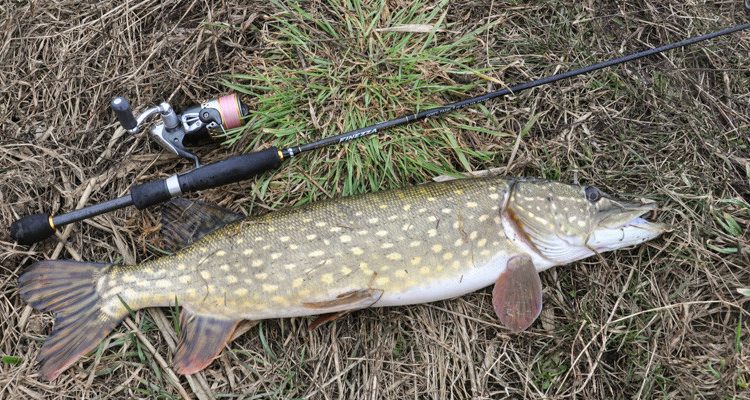
Catching pike in the spring from the shore
Pike are naturally ambush hunters. Knowing this feature of behavior, the fisherman should look for secluded places. Optionally, reeds or dense thickets become a place for pike to concentrate, sometimes one flooded tree is enough. It is also worth paying attention to the change in the speed of the current in the riverbeds: the speed of passing fish decreases, allowing the predator to hunt more efficiently.
From the boat
There are no special rules here. Boats in the spring are used to approach places overgrown with reeds or littered with branches. It is extremely difficult to get here from the coast. Considering the peculiarities of the area, it is worth orienting yourself by the number of fish in the areas you have chosen: the more fry, the more likely it is to meet the “toothy” one. Choose the type of boat depending on the amount of the expected catch and the time that you are going to take for fishing. Long exits should be carried out on a capacious, cargo boat.
Spring zhor pike
The activity of the toothy predator begins immediately after the ice melts. On rivers, this process proceeds faster than on stagnant reservoirs. Running water is freed from ice captivity during a long thaw with an air temperature of 1 to 5 °C. A week is enough for the thick ice to be washed away by the current. First of all, the channel opens, after which the flow of water washes away the frozen layer in a few days.
You can go fishing from the first days of March, if the area of the reservoir is free of ice. Pike starts spawning in February. The fish leave for spawning in small groups, so this action can last until the middle or end of March. During spawning, the predator completely refuses the offered baits.

Photo: f1sh1ng.ru
The spring zhor of a pike begins after the spawning of a predator. With the end of spawning, the fish rests for 1-2 weeks, after which it begins to actively feed. Turbid water from coastal streams allows the predator to come close to the shore, so bites right at the feet in early spring are not uncommon.
Several factors influence the activity of fish:
- air and water temperature;
- wind strength and cloud cover;
- Atmosphere pressure;
- water level.
A sharp rise in water in the river discourages the appetite of the “toothy”. At the beginning of the flood, it is necessary to wait for its peak, and then go to the reservoir. The fish enters shallow bays, visits shallows and coastal edges. Active pike are looking for fry and other food, so they can spend the whole day in motion. An ambush predator moves from one shelter to another, so it is still better to catch a pike near visible ambushes, such as: cattail wall, windows in reeds, fallen trees, snags sticking out of the water.
The peak of biting comes in April. During this period, the predator is perfectly caught on all types of artificial lures, attacks the live bait. In the spring, unfortunately, many promising areas become inaccessible. High water can only be navigated in a special waterproof suit, which every angler should have.
You can detect a predator by several signs:
- a fry playing and running away near the surface;
- visible shelters like snags;
- reverse flow, slowing down the flow of water;
- large splashes along the coastline.
A pike rarely attacks its prey twice, so its splash does not mean that the predator is about to fall for the bait. However, in waters with a high density of toothy robbers, one shelter can serve as an ambush for several predators, so casting towards splashes is not a bad idea.
The spring zhor makes the pike go to the shallows and the current, go to the sandy beaches and spits, where the fry bask in the sun. Shallow water under the warm spring sun warms up much faster, so most predators rise from the depths.
Fish activity continues throughout April and drops in May with the onset of heat. If in the middle of spring the pike bites almost all day, then at the end of the trimester it can feed on exits: at dawn, before sunset or at noon.
Despite the peak of fish activity, it is recommended to use small baits that imitate fry – the main prey of pike in the spring.
Video: Catching pike in early spring. Search tactics, work lures
What to catch pike in early spring?
Thanks to the depleted body in the spring, the “toothy” is ready to be caught on almost all types of small baits. Experienced anglers know this feature, but beginners often still have no luck. Let’s take a look at the most popular baits that have been helping fishermen make big catches for years and see how to catch pike effectively in the spring.
Pike in the spring on the river
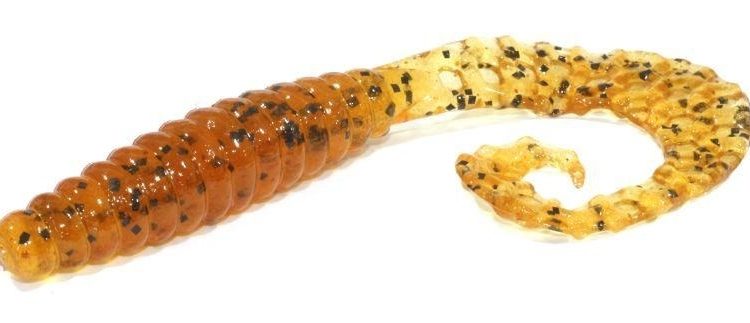
The Bait Breath Curly Grub silicone lure is the best lure ever. The current actively develops the artificial tail of the bait, luring the predator under the hook. Although it is the flexible tail that becomes a problem: it is bitten off after several dives. It’s worth stocking up on plenty of Curly Grub before hiking.
Catching pike in the spring on small rivers
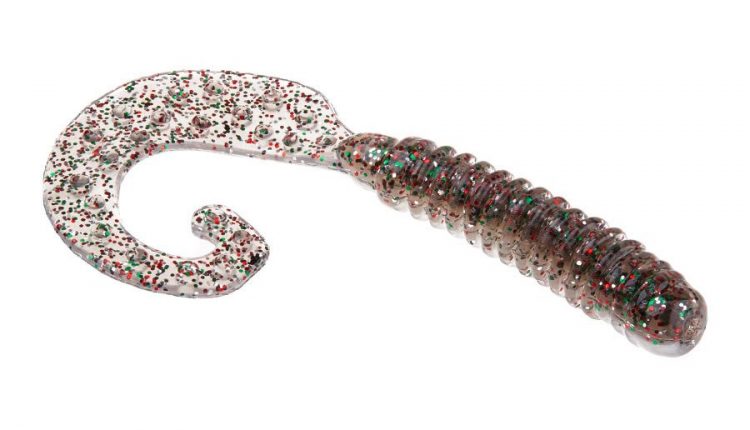
You need to switch to Akkoi Yummy. This option is more suitable for a weak current. This silicone lure has a light movable tail, which actively moves in the water even with a weak current. Remember to choose the right load. Experiment with weights for your lures around 10 to 20 grams. Change your fishing style every few hours to increase your chances of a big catch.
Pike fishing in the ponds in spring
We start using the Megabass Flap Slap wobbler. The model performs very well on passive pike in early spring. We adhere to the “slow wiring” without sudden movements. Recommended for beginners who are not particularly versed in fishing. In this case, the pond may be stocked with medium and not meet the requirements of professional fishing.
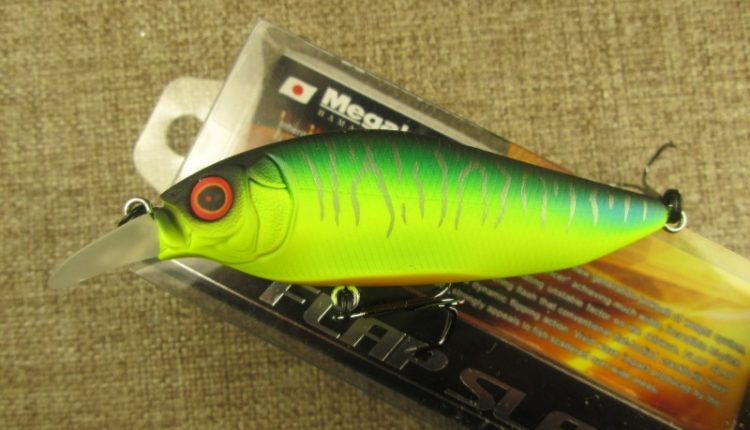
Catching pike in spring in the lake
Ima Flit 120 is suitable for twitching and uniform retrieve on the lake. Recommended for experienced fishermen, but beginners after several trips will also be able to unravel all the features of the Ima Flit 120 wobbler.
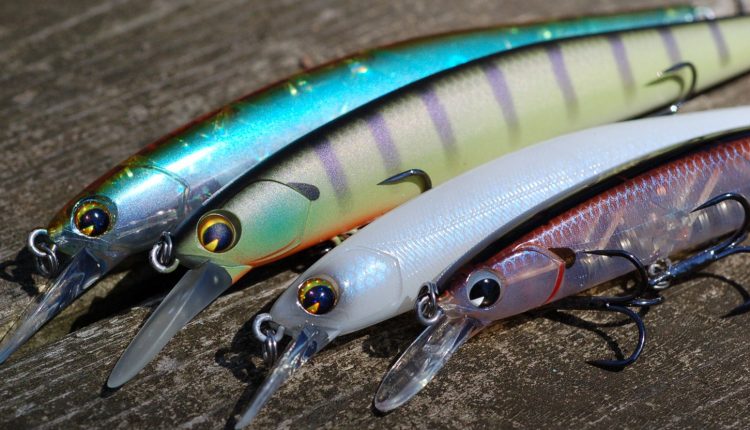

How to catch pike in spring
The method of fishing should be chosen depending on the month and the current situation on the reservoir.
Catching pike in the spring on zherlitsy in March (on live bait)
Catching pike on baits in March with live bait is a particularly interesting time. Fishermen here manage to collect the largest catches of the whole year. A few simple tips will help you maintain the status of the best “hunter” among your friends.
- Roach, perch, bream – we take such fish for live bait.
- Remember that the live bait gives its load, so weigh everything carefully.
- After a bite, we give her a little fishing line and then we just hook it.
Pike fishing in April
We start fishing in April by the end of the month. The water, having warmed up a little, gives the pike strength to get out of the depths to a relative shallow. We make our way on foot or by boat to the vegetation along the coast. It is worth going out for your fishing in the early morning. You can choose cloudy warm days when there is no direct sunlight and silence in the area.
What to catch pike in April?
As a bait, we use spinners “oscillators” for a large individual, and “turntables” for a small one. It is not recommended to constantly catch live fish – the predator responds better to the jig bait, which is well described above.
Pike fishing in May
In May, cloudy days remain the actual weather for pike fishing. You can catch spinning from morning until late in the evening – we rest at night, as it should be after a good bite. We select places for fishing in the area of crossings of currents.
You have to remember a lot of rules before the spring exit to the pike. But, despite the complexity of such fishing, with a little getting used to, you will definitely be able to collect large catches from weighty individuals. Spawning remains the main reference point in time, the relative shallowness near the thickets becomes the place, and as a bait it is better to maintain a balance between live fish and a jig. Keep safety in mind when going out on ice of dubious thickness in early spring. Otherwise, you will have to practice a little to find your universal “key” (fishing method and bait) for your particular region in the spring.









